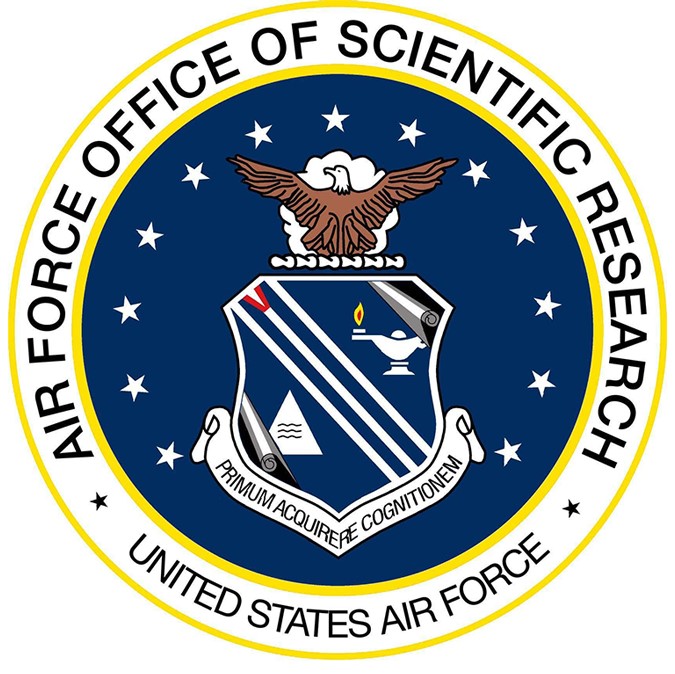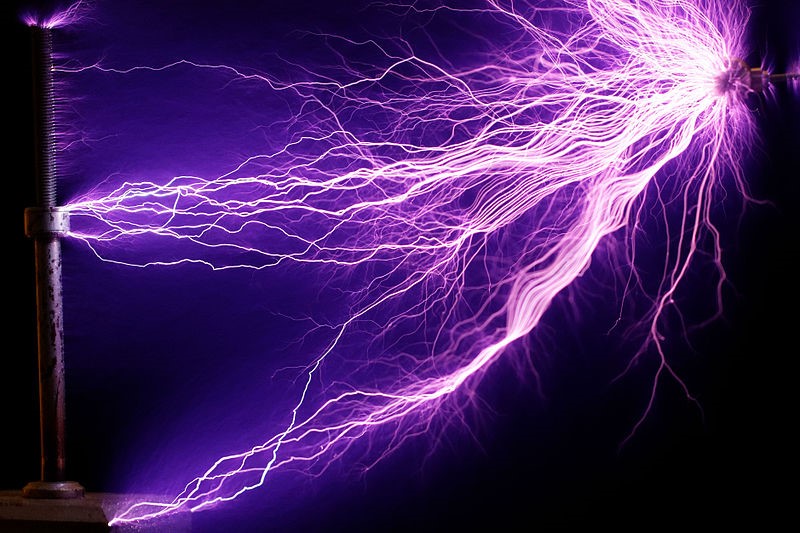- Details
-
Category: Research News
-
Published: Tuesday, November 24 2020 01:38
When the words “artificial intelligence” (AI) come to mind, your first thoughts may be supercomputers, or robots that perform tasks without assistance from humans. Now, a multi-institutional team led by researchers from the University of Maryland (UMD) and National Institute of Standards and Technology (NIST) working with collaborators at Stanford University, University of Washington, University of Pennsylvania, and Duke University have accomplished something not too far off. They developed an AI algorithm called CAMEO that discovered a useful new material without requiring additional training from scientists. The AI system could help reduce the amount of trial-and-error time scientists spend in the lab, while maximizing productivity and efficiency in their research.
The research team published their work on CAMEO in Nature Communications on November 24, 2020.
In the field of materials science, scientists seek to discover new materials that can be used in specific applications. “For example, we are always looking are new quantum materials which can be used for quantum computers and sensors,” said physics affiliate Ichiro Takeuchi, a professor of materials science and engineering and member of the Quantum Materials Center (QMC) at UMD.
But finding such new materials usually takes a large number of coordinated experiments and time-consuming theoretical searches. If a researcher is interested in how a material’s properties vary with different temperatures, then that may mean 10 experiments at 10 different temperatures. Temperature, however, is just one parameter. If there are five parameters, each with 10 values, then that researcher must run the experiment 10 x 10 x 10 x 10 x 10 times, a total of 100,000 experiments. It’s nearly impossible for a researcher to run that many experiments via brute force due to the years or decades it may take.
That’s where CAMEO comes in. Short for Closed-Loop Autonomous System for Materials Exploration and Optimization, CAMEO can ensure that each experiment maximizes the scientist’s knowledge and understanding, skipping over experiments that would give redundant information. Helping scientists reach their goals faster with fewer experiments also enables labs to use their limited resources more efficiently. But how is CAMEO able to do this?
Method Behind the Process
Active learning is a machine learning technique in which computer programs can access data and process it themselves, automatically updating the knowledge and deciding the optimum sequence of information acquisition. This is the basis for CAMEO, a self-learning AI that uses prediction and uncertainty to determine which experiment to try next.
As implied by its name, CAMEO looks for a useful new material by operating in a closed loop: it determines which experiment to run on a material, does the experiment, and collects the data. It can also ask for more information, such as the crystal structure of the desired material, from the scientist before running the next experiment, which is informed by all past experiments achieved in the loop.
“The key to our experiment was that we were able to unleash CAMEO on a combinatorial library where we had made a large array of materials with all different compositions,” said Takeuchi. “In a usual combinatorial study, every material in the array would have been measured one by one to look for the compound with the best properties. Depending on the property of interest, even with a fast measurement setup, that can take a long, long time. With CAMEO, it only took a small fraction of total number of measurements to home in on the best material.”
The AI is also designed to contain knowledge of key principles, some of which includes knowledge of past simulations and lab experiments, how the equipment works, and physical concepts. For example, the researchers armed CAMEO with the knowledge of phase diagrams, which describes how the arrangement of atoms in a material changes with chemical composition and temperature.
Understanding how atoms are arranged in a material is important in determining its properties such as how hard, or how electrically-insulating it is, and how well it is suited for a specific application.
“The AI is unsupervised,” said NIST researcher, Aaron Gilad Kusne. “Many types of AI need to be trained or supervised. Instead of asking it to learn physical laws, we encode them into the AI. You don’t need a human to train the AI.”
One of the best ways to figure out the structure of a material is by bombarding it with x-rays, in a technique called x-ray diffraction. By identifying the angles at which the x-rays bounce off, scientists determine how atoms are arranged in a material, enabling them to figure out its crystal structure. However, a single in-house x-ray diffraction experiment can take an hour or more. At a synchrotron facility, a large machine the size of a football field that accelerates electrically charged particles at close to the speed of light, this process can take 10 seconds, because the fast-moving particles emit large numbers of x-rays. This is the method used in the study at the Stanford Synchrotron Radiation Lightsource.
CAMEO then decides which material composition to study next and focuses the x-rays on the appropriate part of the sample where that composition exists, to investigate its atomic structure. With each new iteration, CAMEO learns from past measurements and identifies the next material to study. This allows the AI to explore how a material’s composition impacts its structure and use this information to find the best material for the task.
“Think of this process as trying to make the perfect cake,” Kusne said. “You’re mixing different types of ingredients, flour, eggs, or butter, using a variety of recipes to make the best cake. With the AI, it’s searching through the ‘recipes’ or experiments to determine the best composition for the material.”
That is how CAMEO discovered the material which the group shortened to GST467. CAMEO was provided with 177 potential materials to investigate, covering a large range of compositional recipes. To arrive at this material, CAMEO performed 19 different experimental cycles, which took 10 hours, compared to the estimated 90 hours it would have taken a scientist with the full set of 177 materials.
The New Material
The material is composed of three different elements (germanium, antimony and tellurium, Ge-Sb-Te) and is a phase-change memory material, that is, it changes its atomic structure from crystalline (solid material with atoms in designated, regular positions) to amorphous (solid material with atoms in random positions) when quickly melted by applying heat. This type of material is used in memory applications such as data storage. Although there are infinite composition variations possible in the Ge-Sb-Te alloy system, the new material GST467 discovered by CAMEO is optimal for phase-change applications.
The research team wanted CAMEO to find the best Ge-Sb-Te alloy, one that had the largest difference in optical contrast between the crystalline and amorphous states. Optical contrast, for example on a DVD disc, allows a scanning laser to read the disc by distinguishing between regions that have high or low reflectivity. They found that GST467 has twice the contrast for a phase change material compared to GST225 or , a well-known material that’s commonly used for DVDs. The larger contrast enables the new material to outperform the old material by a significant margin.
The key part of the experiments was conducted at the Stanford National Accelerator Laboratory (SLAC) at Stanford University, for the U.S. Department of Energy Office of Science. SLAC researchers helped oversee the experiments run by CAMEO.
UMD researchers provided the materials used in the experiments and researchers at the University of Washington – led by Electrical and Computer Engineering Professor, Mo Li – demonstrated the new material in a patterned phase-change memory device.
The new material GST467 has applications for photonic switching devices, which control the direction of light in a circuit. They can also be applied in neuromorphic computing, a field of study focused on developing devices that emulate the structure and function of neurons in the brain, opening possibilities for new kinds of computers as well as other applications such as extracting useful data from complex images.
The work also involved collaboration with electron microscopists at NIST who performed high-resolution microscopy to understand the microstructure of the newly found compound.
Applications to other Materials
The researchers believe CAMEO can be used for other types of materials, such as high-temperature alloys and quantum materials. The code for CAMEO is open source and will be freely available for use by scientists and researchers.
There had been other reports of closed-loop materials and chemistry optimization work. The critical distinguishing feature of the present work with CAMEO is that it was used to discover a novel solid state material whose functionality is encoded in the composition-structure-property relationship of crystalline materials, and as such, the algorithm was able to navigate the course of discovery path by tracking the structural origins of materials functionalities.
One application of CAMEO is minimizing experimental costs since using synchrotron facilities requires time, researchers need a written proposal to use the equipment, and money. But with AI running the experiments, they can be carried out quicker. Researchers estimate a 10-fold reduction in time for experiments using CAMEO since the number of experiments performed can be cut by one tenth. Because the AI is running the measurements, collecting data and performing the analysis, this also reduces the amount of knowledge a researcher needs to run the experiment. All the researcher must focus on is running the AI.
Another potential benefit is providing the ability to work remotely for scientists. “This opens up a wave of scientists to still work and be productive without actually being in the lab,” said SLAC researcher Apurva Mehta. This could mean if scientists wanted to work on research involving contagious diseases or viruses, such as COVID-19, they could do so safely and remotely while relying on the AI to conduct the experiments in the lab.
Researchers are continuing to improve the AI and try to make the algorithms capable of solving ever more complex problems. “The ultimate goal is to incorporate synthesis of crystalline materials in the closed loop – this is particularly hard since standard synthesis tools of crystalline functional materials are not equipped with measurement capabilities,” said Takeuchi. “That calls for some novel hardware integration as well as advances in AI. The future is robot materials science.”
Original story: https://mse.umd.edu/news/story/umdnist-selfdirecting-ai-system-discovers-new-material


